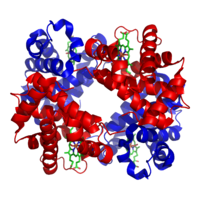
Photo from wikipedia
Capture and activation of the water-soluble uranyl dication (UO22+) remains a challenging problem, as few rational approaches are available for modulating the reactivity of this species. Here, we report the… Click to show full abstract
Capture and activation of the water-soluble uranyl dication (UO22+) remains a challenging problem, as few rational approaches are available for modulating the reactivity of this species. Here, we report the divergent synthesis of heterobimetallic complexes in which UO22+ is held in close proximity to a range of redox-inactive metals by a tailored macrocyclic ligand. Crystallographic and spectroscopic studies confirm assembly of homologous UVI(μ-OAr)2Mn+ cores with a range of mono-, di-, and tri-valent Lewis acids (Mn+). Cyclic voltammetry data demonstrate that the UVI/UV reduction potential in these complexes is modulated over a span of nearly 600 mV, depending linearly on the Lewis acidity of the redox-inactive metal with a sensitivity of 61±9 mV/pKa unit. These findings suggest that interactions with Lewis acids could be effectively leveraged for rational tuning of 5f elements, reminiscent of strategies more commonly employed with 3d transition metals.
Journal Title: Journal of the American Chemical Society
Year Published: 2020
Link to full text (if available)
Share on Social Media: Sign Up to like & get
recommendations!